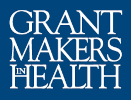Three new resources released by the Appalachian Regional Commission (ARC), the Robert Wood Johnson Foundation (RWJF), and the Foundation for a Healthy Kentucky offer a fresh approach to understanding health in Appalachia by focusing on community strengths and identifying local factors supporting a Culture of Health. These resources include case studies of ten “Bright Spot” counties, each defying predictions for health with better-than-expected outcomes; the performance-focused research methodology that helped identify these counties; and HealthinAppalachia.org, a website that explores extensive county-level health data for the entire Appalachian Region.
Exploring Bright Spots in Appalachian Health: Case Studies describes the people and community-focused strategies, programs, and activities that are working to improve health in these ten Bright Spot counties:
- Grant County, West Virginia
- Potter County, Pennsylvania
- Hale County, Alabama
- Sequatchie County, Tennessee
- Madison County, North Carolina
- Tioga County, New York
- McCreary County, Kentucky
- Wayne County, Kentucky
- Noxubee County, Mississippi
- Wirt County, West Virginia
While each county developed its own approaches for addressing local health challenges, the researchers identified several cross-cutting themes:
- Community leaders engaged in health initiatives
- Cross-sector collaboration
- A tradition of resource sharing
- Local health care providers committed to public health
- Active faith communities
- Grassroots initiatives to combat substance abuse
Field research found that the greatest assets these Bright Spot counties have are their people, who generate collective pride and power through volunteerism, a steadfast commitment to community, and shared values for health. They also benefit from anchor institutions such as schools, businesses, churches, and hospitals that work to improve community health and the social factors that affect health.
An accompanying report, Identifying Bright Spots in Appalachian Health: Statistical Analysis, explores how each of the Region’s 420 counties performed on 19 health outcome measures. The goal of this analysis was to identify and examine counties with a wide range of characteristics and resource levels that had all managed to find a way to be healthier than expected, given their health drivers and resources.
Of the 42 top-performing counties, 10 were chosen as a representative sample for in-depth case study exploration. These ten represent each of the five ARC Appalachian subregions, vary in economic status, and are equally distributed between metropolitan and non-metropolitan locations. Researchers went into these 10 counties to identify networks, values, beliefs, programs, and processes that may have helped them achieve better-than-expected-health outcomes.
The new website HealthinAppalachia.org complements the Bright Spots research, offering regional data on mortality, morbidity, behavioral health, and social determinants, among other health domains. Local leaders, community members, public health officials, and policymakers can use it to explore health disparities and guide decisions on how to improve community health.
HealthinAppalachia.org draws on the August 2017 report Health Disparities in Appalachia to dive deeper into regional data on social association, smoking, physically unhealthy days, mentally unhealthy days, poisoning mortality, and other health measures. Of particular interest are the social association data, which reinforce the value of community connectedness. Appalachia’s social association rate is 33 percent higher than the United States rate.
There is no single “best” approach to improving community health. However, the Bright Spot communities illustrate solutions that may be combined and replicated in other communities to enhance health at little cost. A final report identifying practical activities and strategies from the Creating a Culture of Health in Appalachia: Disparities and Bright Spots research initiative will be released in late 2018.
Contact: Bonnie J. Hackbarth
Phone: 877.326.2583
Email: bhackbarth@healthy-ky.org
